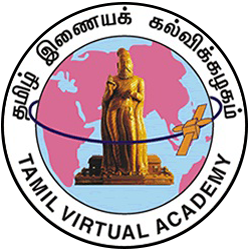Primary tabs
Format for Project Submitting Proposals Under Tamil Computing tools
1.Introduction
The introduction section contains the present scenario of the software product proposed to be developed and outlines the project proposal document.
1.1 Purpose of the Proposal
This subsection describes the need for the proposed software product and its relevance to the public use.
1.2 Overview of the Developer
This section provides an overview of the Developer including their size, management team and capabilities.
1.3 Background of the Project Proposal
This section provides information about the background of the Product / Project. It also specifies if the project is Product oriented / Research oriented / Prototype / Proof of concept. This section provides information about the objective of this project.
1.4 Scope of the project
This section provides information about the scope of the project and product. The various activities that will be performed in the Software Engineering Life Cycle will be listed out in this section. The duration of Warranty / Maintenance (if any) will also be mentioned under this section. The assumptions made with respect to the scope is mentioned here. This section also lists the items that are NOT in scope (for example, the product will be tested in Windows 98 / NT and not in Windows 95).
2. Work Management
2.1 Stages and Deliverables
This section deals with the project plan and management of the work to be accomplished and considers the following factors:
- Development phases to be defined clearly with estimates.
- The functional requirements of the product are well defined.
- The entry and exit criteria, inputs and outputs and reviews to be done at each stage will be provided in more detail.
The following are to be covered in this section of the proposal:
2.1.1 Stage - provides all the details of the phased manner in which the development is expected to take place. For each phase, it should specify:
- All the important milestones and quality checkpoints occurring in the project. (Could be management milestones like review or sign-off dates.)
- Overview of activities taking place at each stage.
2.1.2 Project Deliverables -outlines all the items to be delivered to Tamil Virtual Academy (TVA), delivery dates and locations, quantities required to satisfy the terms of the project agreement. (This is a detailed re-statement of the project objectives, broken down into finer details). Both the inclusion and the exclusion list must be clearly specified.
2.1.3 Duration -specifies the duration of each phase / activity.
2.1.4 Resources - outlines the resource requirement in each phase.
3. Methodology / Architecture
This section highlights the proposed methodology and architectural framework for the project.
4. Project Team Organization
This section identifies the departments or groups constituting the project team organization and state their responsibilities. Also, if there are other vendors / sub contractors involved, their responsibilities should be clearly spelt out.
This section identifies all organizational units participating in or responsibilities for any project-related activity. It also states the reporting relationships and interfaces governing the functioning of these organizational units. These relationships could be direct or indirect (dotted line reporting), explicit or implicit. A suggested format to depict the project team organization in a hierarchical chart.
This section identifies and states the responsibilities of the vendor and Tamil Virtual Academy (TVA).
5. Development Environment
This section specifies the computing systems, team structures, development and conversion methodologies, programming languages, tools (internal and external), techniques and methods to be used.
This section should also address the technical environment in which the product will be run / used. (A system can be developed under NT environment, but used in Windows 95).
6. Standards, Conventions and Guidelines
This section outlines the standards, conventions and guidelines applicable for various activities in the project. Since most of these are expected to be covered in detail, in appropriate manuals, all that is required is an identification of the company standards that are being followed, along with a listing of deviations from these standards and reasons for the same.
7. Assumptions, Dependencies and Constraints
This section specifies the assumptions on which the project is based, the issues project is dependant upon, and the constraints under which the project is to be conducted. The entire focus is on the project as a whole, and not on any activity or phase within the project.
8. Risk Management
Risk management identifies and assesses the risk factors associated with the project. If possible, it should also prescribe mechanisms for tracking the various risk factors and implementing contingency plans. Risk factors that could be considered are:
- Technological risks
- Schedule risks
- Risks due to the size and complexity of the product
- Risks due to requirements changes
9. Monitoring, Controlling and Reporting Mechanisms
This section specifies the mechanisms used to monitor adherence to the work schedule involving the vendor and Tamil Virtual Academy (TVA). It should define the following:
- Reporting mechanisms, formats and frequency
- Procedure for requesting changes to the work schedule
- Information flows, review and audit mechanisms
10. Acceptance Criteria
This section specifies the acceptance criteria of the Software Product to be delivered. The criteria typically covers the following:
- Procedure for evaluating the product
- Software and hardware environments and resources
- Schedule
- Warranty and Maintenance terms
- The above has to be approved by Tamil Virtual Academy (TVA).

